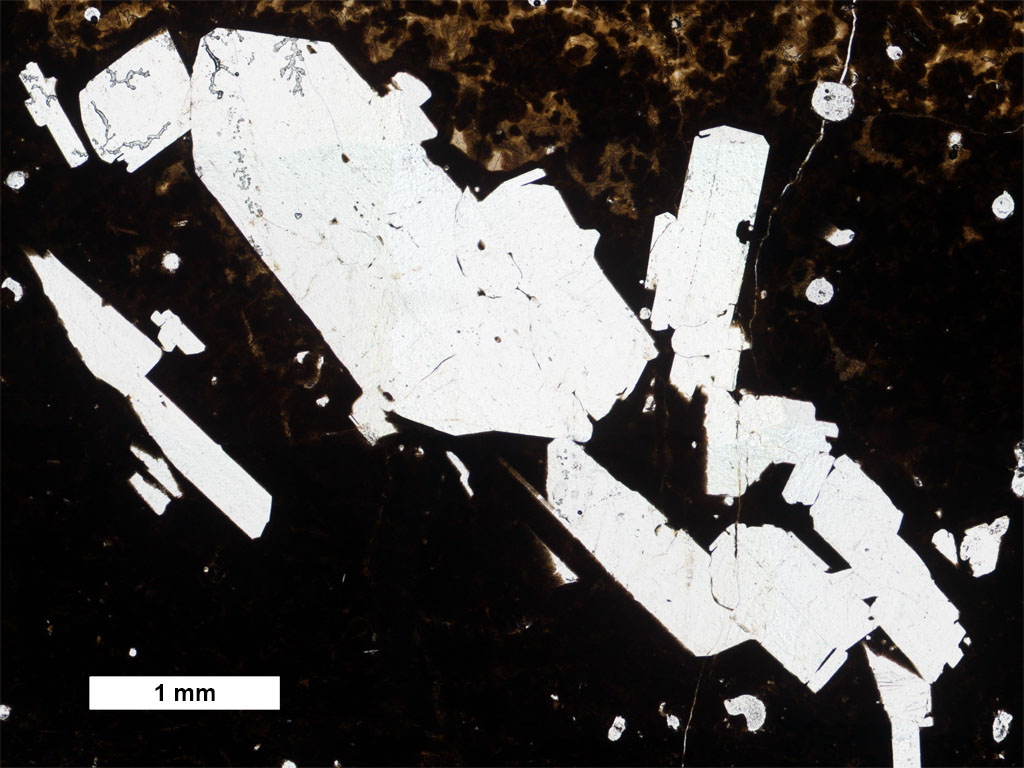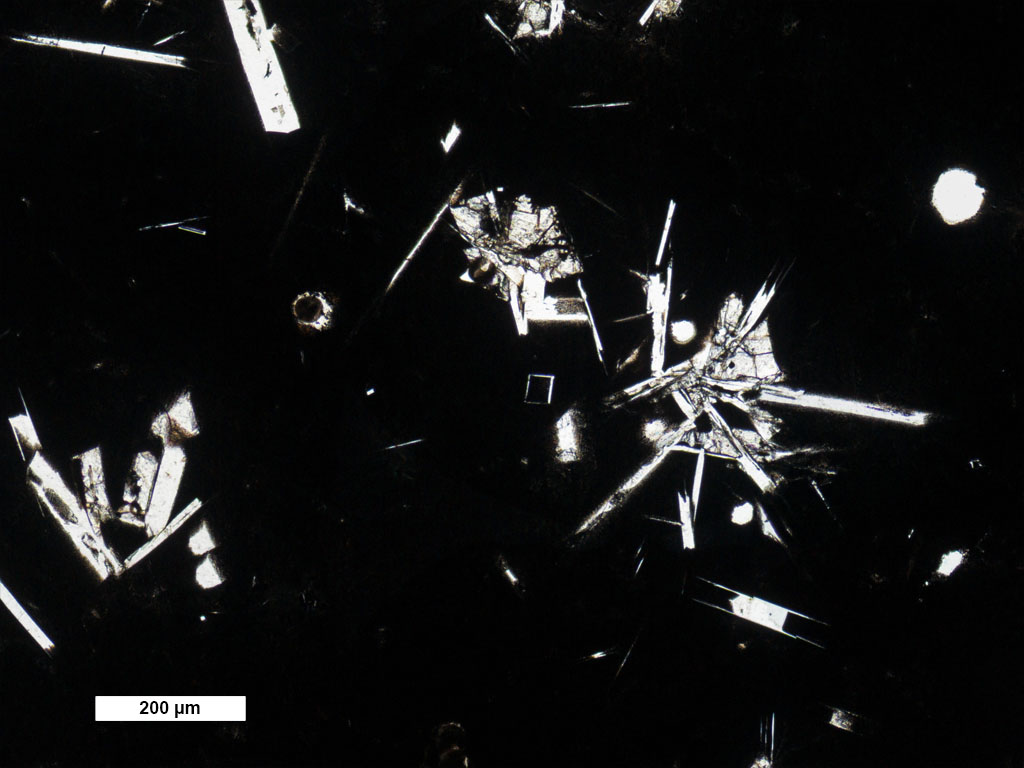1.5 MORB Petrography: Textures
Textures and modal mineralogy can be related to cooling history and to the phase relationships detailed in simplified phase diagrams that relate to basaltic systems. Hence, mineralogic and textural relationships provide information on magma chemistry and conditions of crystallization. There is a connection! Sometimes, events such as the recharge of a magma chamber with a new batch of primitive magma or mixing of magmas with distinctly different compositions can be deduced by carefully observing the textures (and compositions) of mineral grains (primarily phenocryst phases.)
There are many textures that one can observe in MORB (and other rocks) that provide information about the cooling history of the lava [Natland, 1980; Bryan, 1983; Grove, 1990]. MORB are usually erupted at temperatures ~1200°C into water that is typically about 2° C leading to cooling so rapid (quenching) that crystals have little time to grow or nucleate at all. This rapid quenching leads to a variety of groundmass and microphenocryst textures that are characteristic of eruption in an aqueous environment (see Figure 1.10). Typically MORB are glassy to fine-grained and rarely contain more than 10% phenocrysts. Lava morphology (related to eruption dynamics) plays a large role in the textural development of MORB, and rocks can range from holohyaline (exterior surfaces of flows or entire sheet flows if thin enough) to fine-grained holocrystalline (interiors of thicker flows, common in pillow lavas) and more rarely to porphyritic textures. Intergranular textures are very common, including intergrowths of mafic minerals (olivine, pyroxene) with plagioclase. Eruptive dynamics and the flow of lava can lead to sub-trachytic textures (aligned crystals) and elongate vesicles.
Vesicle size and shape has implications about the amount exsolved volatiles within the lava, which relates to lava chemistry, eruption environment and eruptive style. Generally, however, MORB tend to have a low vesicularity (<2%) compared to subaerially erupted lavas because MORB magmas have low volatile contents by comparison, and the pressure of the overlying water column inhibits bubble formation and vesiculation. If water depth (pressure) is held constant, vesicle size and abundance generally correlates with how evolved a lava is, because volatile (H2O, CO2) contents generally increase with increasing magma evolution. Rocks as evolved as andesites and dacites occur rarely in MOR settings, and as expected, have a greater volume of vesicles. Vesicle walls are often “decorated” with magmatic sulfides that crystallize within them, and with time, vesicles may become completely filled with secondary (not magmatic) minerals, in which case the vesicles are termed amygdules.

Figure 1.08. MORB Thin Section. Glomeroporphyritic crystal clot of plagioclase feldspar. Click on the image to see a larger interactive version.

Figure 1.09. MORB Thin Section. Crystal clots showing cotectically intergrown olivine and plagioclase. Olivine grains show embayments and grain shape indicative of resorption and disequilibrium. Click on the image to see a larger interactive version.